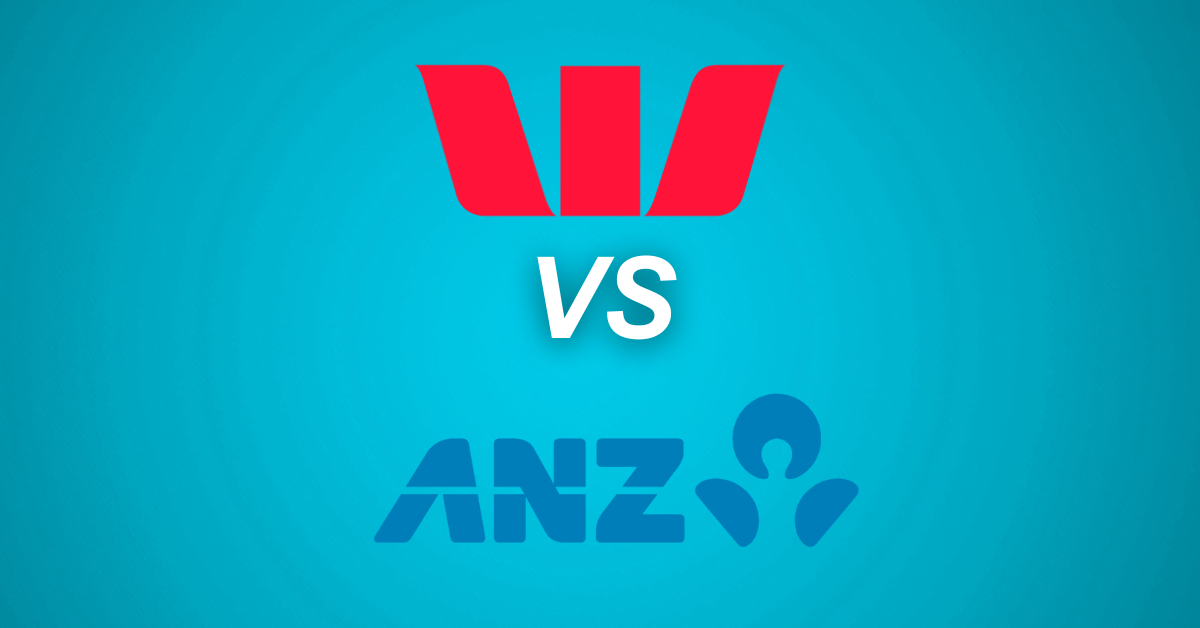Embarking on the journey of entrepreneurship in Australia can be both thrilling and challenging, offering a myriad of opportunities for aspiring business owners. With a dynamic economy and supportive business environment, Australia provides fertile ground for small businesses to flourish.
However, navigating the intricacies of starting a business—such as crafting a solid business plan, understanding Australian business laws, and securing the necessary business registration—requires careful planning and informed decision-making.
In this guide that includes a free checklist to help you out, we will walk you through essential steps and strategic insights to help you successfully start a business, from exploring funding options to implementing effective marketing strategies.
Whether you’re inspired by a unique idea or motivated to be your own boss, this comprehensive resource is designed to empower you with confidence and clarity as you build your small business in Australia.
NOTE: Get your free checklist below: How to Start Your Own Business in Australia.
Understanding the Australian Business Landscape
Before diving into the specifics of starting your business, it’s crucial to grasp the unique aspects of the Australian business environment. This section will provide you with key insights into the small business sector, help you navigate Australian business laws, and identify market opportunities.
Key Insights into Small Business Australia
Small businesses are the backbone of the Australian economy, accounting for a significant portion of employment and economic output. Understanding the landscape is crucial for aspiring entrepreneurs.
According to the Australian Bureau of Statistics, small businesses make up 98% of all businesses in Australia, employing nearly half of the private sector workforce. This underscores the importance and potential of small business ventures in the country.
The Australian government offers various support programs and initiatives to foster small business growth. These include tax incentives, grants, and advisory services designed to help entrepreneurs navigate challenges and seize opportunities.
Key industries for small businesses in Australia include retail, construction, professional services, and hospitality. However, emerging sectors like technology, renewable energy, and healthcare also present exciting opportunities for innovative startups.

Navigating Australian Business Laws
Understanding and complying with Australian business laws is essential for the success and longevity of your venture. Familiarizing yourself with key regulations will help you avoid legal pitfalls and operate with confidence.
The primary legislation governing businesses in Australia is the Corporations Act 2001. This comprehensive law outlines the rules for company formation, management, and operations. It’s crucial to understand how this act applies to your specific business structure.
Employment laws, including the Fair Work Act 2009, regulate workplace relations and set standards for employee rights and entitlements. As a business owner, you’ll need to ensure compliance with minimum wage requirements, leave entitlements, and workplace health and safety regulations.
Consumer protection laws, such as the Australian Consumer Law, govern how businesses interact with customers. These laws cover areas like product safety, warranties, and fair trading practices. Familiarizing yourself with these regulations will help you build trust with your customers and avoid legal issues.
Recognizing Market Opportunities
Identifying viable market opportunities is a critical step in starting a successful business in Australia. This process involves thorough research, analysis, and a keen understanding of consumer needs and trends.
Start by conducting market research to identify gaps in the market or unmet consumer needs. This can involve surveys, focus groups, or analyzing existing market data. Look for areas where current offerings fall short or where there’s potential for innovation.
Stay informed about emerging trends and technologies that could disrupt traditional industries or create new markets. Australia’s focus on innovation and digital transformation presents opportunities in areas like fintech, e-commerce, and sustainable technologies.
Consider demographic shifts and changing consumer preferences. For example, Australia’s aging population creates opportunities in healthcare and aged care services, while increasing environmental awareness drives demand for sustainable products and services.
Crafting a Solid Business Plan
A well-structured business plan is your roadmap to success, guiding your decisions and helping you secure funding. This section will outline the key components of a business plan, provide case studies of successful plans, and introduce tools to aid in your planning process.
Essential Components of a Business Plan
A comprehensive business plan serves as a blueprint for your venture, outlining your vision, strategies, and financial projections. It’s an essential document for attracting investors and guiding your business decisions.
The executive summary is the first and most crucial section of your plan. It should concisely capture the essence of your business idea, market opportunity, and financial projections. This section often determines whether investors will read further.
Your market analysis should demonstrate a deep understanding of your industry, target customers, and competitors. Use data and insights to show the viability of your business idea and your competitive advantage.
Financial projections, including income statements, cash flow forecasts, and break-even analysis, are critical. These should be realistic and based on well-researched assumptions. Include both short-term (1-3 years) and long-term (3-5 years) projections.
Case Study: Successful Business Plans
Examining successful business plans can provide valuable insights and inspiration for crafting your own. Let’s look at a case study of an Australian startup that effectively used its business plan to secure funding and achieve growth.
Case Study: Tech Innovators Pty Ltd
Tech Innovators, a Melbourne-based SaaS startup, crafted a business plan that helped them secure $2 million in venture capital funding. Key elements of their successful plan included:
-
A clear, compelling executive summary that succinctly explained their innovative product and market potential
-
Detailed market analysis showing a gap in the Australian B2B software market
-
Realistic financial projections backed by thorough research and conservative estimates
-
A strong management team with relevant industry experience
The plan’s clarity, depth of research, and realistic projections were cited by investors as key factors in their decision to fund the startup.
Tools for Business Plan Development
Leveraging the right tools can streamline the process of creating your business plan and ensure you don’t overlook crucial elements. Here are some recommended resources to assist you in developing a comprehensive plan.
-
Business Plan Templates: Websites like business.gov.au offer free templates tailored to Australian businesses, providing a structured format to follow.
-
Financial Projection Software: Tools like LivePlan or PlanGuru can help you create professional financial forecasts and charts.
-
Market Research Databases: Resources like IBISWorld or Statista provide valuable industry data and market trends to inform your analysis.
-
Collaboration Platforms: Tools like Google Docs or Asana can facilitate collaboration if you’re working with a team on your business plan.
Remember, while these tools are helpful, the quality of your plan ultimately depends on the depth of your research and the clarity of your vision.
Registering Your Business
Properly registering your business is a crucial step in establishing your venture’s legal foundation. This section will guide you through the process of starting a business in Australia, outline registration essentials, and help you understand different legal structures and their tax implications.
Steps to Start a Business in Australia
Starting a business in Australia involves several key steps that ensure your venture is legally recognized and compliant with local regulations. Following these steps will set a solid foundation for your business operations.
-
Choose your business structure: Decide whether you’ll operate as a sole trader, partnership, company, or trust. Each structure has different legal and tax implications.
-
Apply for an Australian Business Number (ABN): This unique 11-digit number identifies your business to the government and other entities. It’s essential for tax purposes and business transactions.
-
Register your business name: If you’re not operating under your personal name, you’ll need to register your business name with the Australian Securities and Investments Commission (ASIC).
-
Obtain necessary licenses and permits: Depending on your industry and location, you may need specific licenses or permits to operate legally. Check with your local council and relevant industry bodies.
Business Registration Essentials
Understanding the key components of business registration in Australia is crucial for ensuring your venture starts on the right legal footing. Here are the essential elements you need to consider.
The Australian Business Number (ABN) is a fundamental requirement for most businesses. It’s free to apply for an ABN through the Australian Business Register website. Having an ABN allows you to claim GST credits, avoid PAYG withholding on payments you receive, and confirm your business identity to others.
Registering your business name is another crucial step. This is different from registering a company and is required if you’re not trading under your personal name. Business name registration is done through ASIC and incurs a fee.
Consider registering for Goods and Services Tax (GST) if your annual turnover is $75,000 or more. This registration is done through the Australian Taxation Office (ATO) and can be completed simultaneously with your ABN application.
Legal Structures and Tax Considerations
Choosing the right legal structure for your business is a critical decision that impacts your tax obligations, personal liability, and operational flexibility. Understanding the options and their implications is essential for making an informed choice.
Sole Trader: This is the simplest structure, where you operate the business as an individual. You have full control but are personally liable for all aspects of the business. Profits are taxed as personal income.
Partnership: Suitable for two or more people running a business together. Partners share control and profits, but also liabilities. Each partner pays tax on their share of the partnership income.
Company: A separate legal entity from its shareholders. It offers limited liability protection but has higher setup and compliance costs. Companies pay a flat tax rate on profits.
Trust: A structure where a trustee holds property or assets for the benefit of others (beneficiaries). Trusts can offer tax advantages but are complex to set up and manage.
Consider consulting with a tax professional or business advisor to determine the best structure for your specific circumstances and goals.
Securing Funding and Resources
Securing adequate funding and resources is often one of the most challenging aspects of starting a business. This section will explore various funding options available to Australian entrepreneurs, highlight government grants, and emphasize the importance of building a supportive network.
Exploring Funding Options
Navigating the landscape of business funding can be daunting, but understanding your options is crucial for securing the capital needed to launch and grow your venture. Australia offers a diverse range of funding sources for entrepreneurs.
Traditional bank loans remain a common funding option for small businesses. These loans often require a solid business plan, good credit history, and sometimes collateral. While they can provide substantial capital, the application process can be rigorous.
Angel investors and venture capital firms are alternatives for businesses with high growth potential. These investors provide capital in exchange for equity in your company. They often bring valuable expertise and connections along with their financial investment.
Crowdfunding platforms like Kickstarter or Pozible have gained popularity in recent years. These allow you to raise smaller amounts from a large number of people, often in exchange for rewards or pre-orders of your product.
Consider alternative financing options such as invoice financing, equipment leasing, or peer-to-peer lending. These can provide more flexible terms or quicker access to funds compared to traditional loans.
Leveraging Government Grants
The Australian government offers various grants and incentives to support small businesses and startups. These can provide valuable funding without the need for repayment or equity exchange.
Research and Development (R&D) Tax Incentive is a significant program that provides tax offsets for eligible R&D activities. This can be particularly beneficial for innovative startups in technology or science-based fields.
The Entrepreneurs’ Programme offers a range of grants and services to help businesses innovate, grow, and compete. This includes matched funding for the commercialization of novel products, processes, or services.
State and local governments also offer grants targeting specific industries or regions. For example, the New South Wales government provides grants for small businesses affected by natural disasters or looking to expand internationally.
To find relevant grants, use the government’s grant finder tool at business.gov.au. Keep in mind that grant applications often require detailed documentation and can be competitive, so thorough preparation is key.
Building a Supportive Network
Developing a strong network of mentors, advisors, and fellow entrepreneurs can be invaluable as you start and grow your business. This network can provide guidance, resources, and potential partnerships.
Join local business associations or chambers of commerce to connect with other business owners in your area. These organizations often host networking events and provide resources for small businesses.
Attend industry conferences and trade shows to stay informed about trends and connect with potential partners or customers. These events can also be great opportunities to learn from successful entrepreneurs in your field.
Consider joining a coworking space or business incubator. These environments often foster collaboration and can provide access to shared resources and expertise.
Leverage online platforms like LinkedIn to build your professional network. Engage with industry groups, share your expertise, and connect with potential mentors or advisors.
Remember, building a supportive network takes time and effort. Be proactive in reaching out, offer value to others, and maintain relationships even when you don’t have an immediate need.
Developing Effective Marketing Strategies
A well-executed marketing strategy is crucial for attracting customers and growing your business. This section will guide you through understanding your target audience, leveraging digital marketing techniques, and building a strong brand identity for your small business in Australia.
Understanding Your Target Audience
Identifying and understanding your target audience is the foundation of effective marketing. It allows you to tailor your products, services, and messaging to meet the specific needs and preferences of your potential customers.
Start by creating detailed buyer personas that represent your ideal customers. These should include demographic information, interests, pain points, and buying behaviors. Use market research, customer surveys, and data analytics to inform these personas.
Analyze your competitors’ customer base to identify potential gaps in the market or underserved segments. This can help you differentiate your offering and target niche markets effectively.
Consider the cultural diversity of Australia when defining your target audience. Different regions and demographics may have varying preferences and behaviors that could impact your marketing approach.
Regularly review and update your understanding of your target audience. Consumer preferences and market conditions can change rapidly, especially in today’s dynamic business environment.
Digital Marketing for Small Business Australia
In today’s digital age, having a strong online presence is essential for small businesses in Australia. Digital marketing offers cost-effective ways to reach and engage your target audience.
Develop a user-friendly, mobile-responsive website that clearly communicates your value proposition and makes it easy for customers to find information or make purchases. Optimize your site for search engines (SEO) to improve visibility in search results.
Leverage social media platforms popular in Australia, such as Facebook, Instagram, and LinkedIn. Create engaging content that resonates with your audience and encourages interaction. Consider using paid social media advertising to reach specific demographics or interests.
Email marketing remains an effective tool for nurturing customer relationships and driving sales. Build an email list through your website or in-store interactions, and send regular newsletters with valuable content or promotional offers.
Explore content marketing strategies such as blogging, video content, or podcasts to establish your expertise and attract potential customers. Share informative, relevant content that addresses your audience’s needs and interests.
Consider local SEO strategies to improve visibility for location-based searches. This is particularly important for businesses serving specific geographic areas in Australia.
Building a Strong Brand Identity
A strong brand identity sets your business apart from competitors and creates a lasting impression on your target audience. It encompasses your visual identity, voice, values, and overall customer experience.
Define your brand’s core values and mission. These should align with your business goals and resonate with your target audience. They will guide your brand’s personality and messaging across all touchpoints.
Develop a consistent visual identity, including a logo, color scheme, and typography. These elements should reflect your brand’s personality and be applied consistently across all marketing materials and platforms.
Craft a unique brand voice that speaks to your target audience. This voice should be consistent across all communications, from your website copy to social media posts and customer service interactions.
Consider the Australian context when building your brand. Incorporate elements that resonate with local culture and values, but be mindful of the diverse nature of the Australian population.
Deliver on your brand promise through exceptional customer experiences. Every interaction with your business should reinforce your brand identity and values.
Remember, building a strong brand takes time and consistency. Regularly review and refine your brand strategy to ensure it remains relevant and effective as your business grows.




